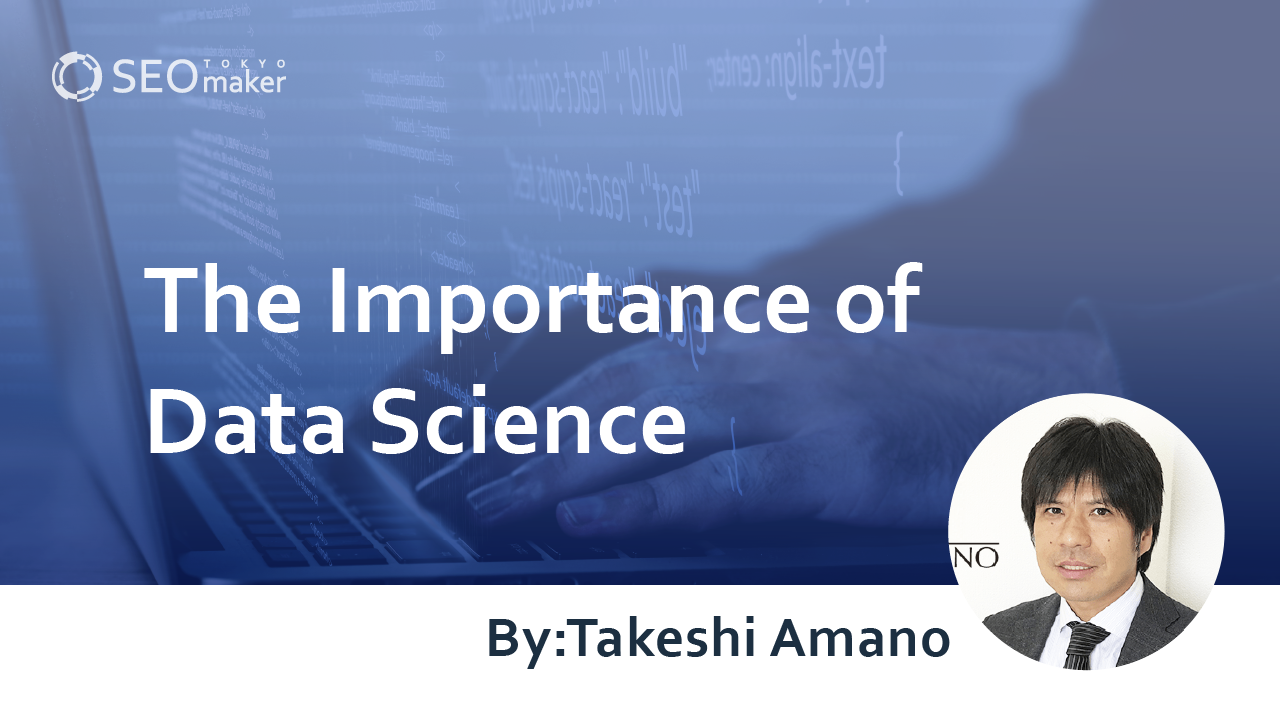The Importance of Data Science: Explaining Through 5 Examples
contents

Data Science is becoming increasingly prominent in the field of data utilization, involving big data and machine learning.
Although it requires more advanced analysis than data analytics, making specialists scarce, its application in marketing is undeniably vital.
In this article, we will cover the basics of data science, its implementation steps, and illustrate with five specific examples.
What is Data Science?
Data Science involves deriving insights and knowledge from various data types, including AI and statistics. In the realm of web marketing, it utilizes daily data from websites, apps, and customer information.
When it comes to utilizing such data, handling vast amounts is necessary, and detailed analysis is not simple. Therefore, to extract valuable information, data science and experts who manage data are indispensable elements.
This section will explain the differences between data analytics and data science and the necessity of data science.
Differences from Data Analytics
While data analytics is a related field, data science distinguishes itself by using machine learning to predict future trends and analyze unstructured data, whereas data analytics mainly focuses on statistical data analysis.
Professionals in these fields are known as data scientists and data analysts, respectively.
Here are the specific differences in job responsibilities by profession.
Data Scientist
- Establishing environments for data collection and analysis
- Analyzing and reporting data
- Utilizing big data to benefit the business
Data Analyst
- Primarily processing, structuring, and summarizing data
Thus, data science demands more advanced skills, offering broader and more in-depth analyses and statistics.
The Necessity of Data Science
The rise in attention towards data science is primarily due to the utilization of big data, spurred by the development of the Internet of Things (IoT). As various objects become interconnected through IoT, the amount of data handled has dramatically increased.
Consequently, for businesses, leveraging big data has become an essential element for new business strategies and identifying challenges, making the complex field of data science increasingly indispensable.
The growing demand for data science is evident as many companies are actively seeking data scientists to handle their data needs.
Data Science Implementation Steps
Due to the specialized nature of data science, having prior knowledge about big data and analytical skills can facilitate a smoother implementation process. Instead of diving in unprepared, start by understanding the overall workflow.
The steps typically involve;
- Problem Definition
- Data Organization
- Data Analysis
- Problem Solving
Let’s discuss each of these steps.
Problem Definition
Initially, it’s crucial to define what business problem you aim to solve using data, identifying the specific challenges.
In data science, extracting valuable information is the goal; without a clear problem defined, it’s impossible to determine what information is needed.
If the problem is unclear, it would be challenging to lead to the desired outcome.
Therefore, it’s important to clarify how the data will be used and what results are expected from its utilization.
Data Organization
Next, data collection and organization take place. While the specifics may vary, you will likely deal with vast amounts of data. Thus, it’s crucial to visualize and scrutinize the collected data to ensure its accuracy.
If there are data points significantly deviating from the average or appearing as outliers, it could indicate errors in the collection process. While not all unusual data points are incorrect, it’s important to assess them during the organization phase.
Data Analysis
In data science, analysis primarily employs statistical methods and machine learning models.
This involves a process of trial and error, including modeling and accuracy validation. However, enhancing precision is not straightforward and requires advanced knowledge and skills.
Therefore, instead of focusing solely on improving accuracy, it’s also viable to formulate strategies from the analysis results and engage in a cycle of re-analysis and refinement based on effectiveness testing.
Since analysis is a continuously viable activity, determining when to transition to action is a critical aspect.
Problem Solving
Based on the analysis results, you then solve the defined problems. It’s crucial to convey conclusions in a way that is understandable not only to data science professionals but also to those without specialized knowledge.
Ultimately, the goal is to identify improvements or new strategies that can benefit the business.
Keys to Successful Data Science
A critical element for successful data science is the collection of sufficient data for analysis. Without ample data, starting any analysis is impossible. Moreover, due to the necessity of advanced knowledge and skills, having specialized personnel and a conducive environment is also crucial for success.
Here, we delve into the keys to making data science successful.
Collecting Sufficient Data
For data science to be successful, ample data collection for analysis is essential.
Data science allows for advanced analysis, but without enough data, there is essentially nothing to analyze.
Also, indiscriminate data collection is ineffective; it’s important to gather data purposefully and efficiently according to your objectives.
For companies without any current data, establishing a data collection environment should be the first step. Clarifying the company’s challenges and efficiently collecting various data types are crucial for success.
Developing Data Science Talent
Handling big data is common in data science, necessitating not only basic knowledge but also a broad understanding of data acquisition and analysis methods.
Thus, nurturing specialized talent is indispensable for success in data science.
However, developing such talent from scratch internally requires learning in multiple areas, including mathematics, statistics, marketing, and programming, over a long term.
If a company aims to utilize data science in the short term, it’s advisable not only to focus on talent development but also to consider active hiring and outsourcing to specialized firms.
Operational Framework and Environment Setup
While we discussed the importance of skilled professionals earlier, even the most talented data scientists cannot produce the desired results without a proper operational framework and environment within the company.
For example, consider the implementation of tools for data collection and analysis. In data science, manual handling of the extensive data processing required is impractical. Additionally, establishing environments for new projects and data storage is crucial.
While the focus often shifts to personnel, the significance of creating the right environment should also be understood.
Data Science in Marketing [Across Different Industries]
Although machine learning is well-known in the context of ad distribution, data science is in fact applied across a broad range of sectors.
We will discuss four industry-specific examples of how data science is utilized in marketing.
- Construction
- Healthcare
- Logistics
- E-commerce
Construction
In the construction industry, marketing applications often feature smart homes equipped with IoT devices.
By installing servers within buildings for data collection, it’s possible to not only control home appliances but also offer customer-tailored customizations and energy-saving measures.
Customization for customers can include, for example in air conditioning, automatic temperature adjustments through temperature sensors or the use of voice recognition, enabling a living experience tailored to the residents’ needs.
Additionally, IoT facilitates a comfortable and efficient living environment by automatically switching power generation systems based on electricity consumption, leveraging customer lifestyle data to eliminate wastefulness.
Healthcare
In the healthcare industry, machine learning is used for inventory management of pharmaceuticals and streamlining distribution operations.
For example, logistics and demand data for medications can be analyzed using machine learning to adjust stock levels, preventing shortages.
Moreover, in the healthcare sector, wholesale companies are adopting automation, such as having robots perform sorting and inspection tasks in factories, significantly reducing labor costs.
Logistics
In the logistics industry, optimization is not limited to logistics operations but also extends to the development of optimal shipping routes and early detection of anomalies in maritime operations, utilizing navigation data.
Optimizing shipping routes involves deriving safe paths from navigation data, and machine learning is employed to analyze images from ships to avoid collisions by determining the distance to objects.
Additionally, IoT integration in ships facilitates the automation of anomaly detection, advancing the efficiency of processes that were traditionally manual through machine learning.
E-commerce
The e-commerce sector, being more advanced in utilizing machine learning, applies it for specific customer behavior analysis among other uses.
Specific applications include;
- Automatic product identification
- Automated creation of product information
- Predicting product categories from image data
- Estimating potential customers
Machine learning is utilized for identifying and approaching prospective customers, starting from picking them out.
Given its direct link to marketing tactics such as ad distribution, the application of machine learning in e-commerce is indeed very broad.
Top 5 Marketing Examples in Data Science
Previously, we introduced examples by industry. Now, we will discuss the following five actual cases
- Streamlining Ordering Operations with Customer Data
- Enhancing Customer Success with Customer Data
- Reducing Manual Labor and Time Costs with Sales Data
- Improving Product Placement with Sales Data
- Analyzing Customer Behavior with Location Data
Streamlining Ordering Operations with Customer Data
This is an example from a clothing retailer that succeeded in streamlining its ordering operations by utilizing customer and product data.
Traditionally, the store predicted inventory status and customer visits, spending two hours on ordering.
However, by sharing accumulated customer and product data with suppliers, they created a system that allows ordering at the press of a button. This led to a significant reduction in ordering time, down to a few seconds, thus drastically cutting time and cost expenses.
Moreover, creating an environment where all employees can perform data analysis efficiently was key.
Although Excel was the tool used, ensuring all employees had uniform data utilization skills was the secret to success.
- Utilization of customer and product data
- Streamlining of ordering operations
- Data utilization by all employees
Enhancing Customer Success with Customer Data
Another example from a clothing retailer involves using customer data to enhance customer success.
The improvement in customer success was due to personalized engagement through an app. By modifying the app’s display content to match the customer’s interests, it achieved the provision of desired products.
Utilizing user data from the app allowed for optimal product analysis and transformed the app into a more user-friendly tool for customers.
The success factor was not just in using the app but effectively leveraging the inevitably accumulating user data.
- Utilization of app user data
Reducing Manual Labor and Time Costs with Sales Data
Next, we have an example of a restaurant that successfully reduced labor and time costs by utilizing sales data.
This case involves a conveyor belt sushi restaurant that attached IC tags to all sushi plates to collect data on the freshness and sales status of the sushi.
Typically, sushi is made to order or prepared for the conveyor belt, but with the information from the IC tags, the restaurant successfully managed optimal serving times and intervals.
Previously, there was significant waste of ingredients. However, by understanding in-house demand, the restaurant managed to serve dishes at the best times, reducing food waste and unnecessary labor costs.
This led to increased sales and solved various problems using in-store sales data.
- Utilization of sales data
- Implementation of IC tags
Improving Product Placement with Sales Data
Another success story is the efficient product placement achieved by utilizing sales data and in-store activity data.
A particular store collected three types of data: POS sales data, in-store employee and customer behavior data, and product placement data.
Analysis revealed high-value customer areas within the store, leading to strategically placing best-selling products and employees in those areas, which resulted in a sales increase of over 10%.
While it may seem like a simple change in arrangement, the key was analyzing employees’ movements and interactions with customers to identify active areas from multiple perspectives.
Although there was no direct increase in customer spending, the successful analysis of crucial store elements like product placement and staff positioning is considered a reason for success.
- Utilization of sales data
- Utilization of in-store employee and customer behavior data
- Utilization of product placement data
Analyzing Customer Behavior with Location Data
Finally, we present an example where customer behavior analysis was successfully conducted using location data.
This involves a taxi company that collected various data through GPS-equipped taxis.
Specifically, the analysis covered past boarding locations, differentiated by
- Month
- Day of the week
- Time of day
Including several categories, you can review past and real-time boarding locations. This system allows the identification of where customer numbers are increasing currently.
By combining past customer information, successful strategies like targeting long-distance travelers have been implemented to acquire premium customers.
Additionally, the data allows for efficient operations, such as dispatching the nearest taxi to regular customers, leveraging the analysis of customer behavior.
POINT
-Utilization of GPS location data
Summary
This article has explored the basics of data science, its implementation, and five specific examples. Data science plays a crucial role in marketing and offers a range of applications, yet it requires specialized knowledge and skills, making it complex to manage. For long-term utilization, developing in-house talent is an option. However, for immediate implementation, hiring specialized personnel or contracting a professional firm is recommended.










![What is a Description? Explaining the Meaning, Writing Style, and Changing Word Count – [2023 Edition]](https://www.switchitmaker2.com/en/wp-content/uploads/2024/09/what-is-description.webp)










